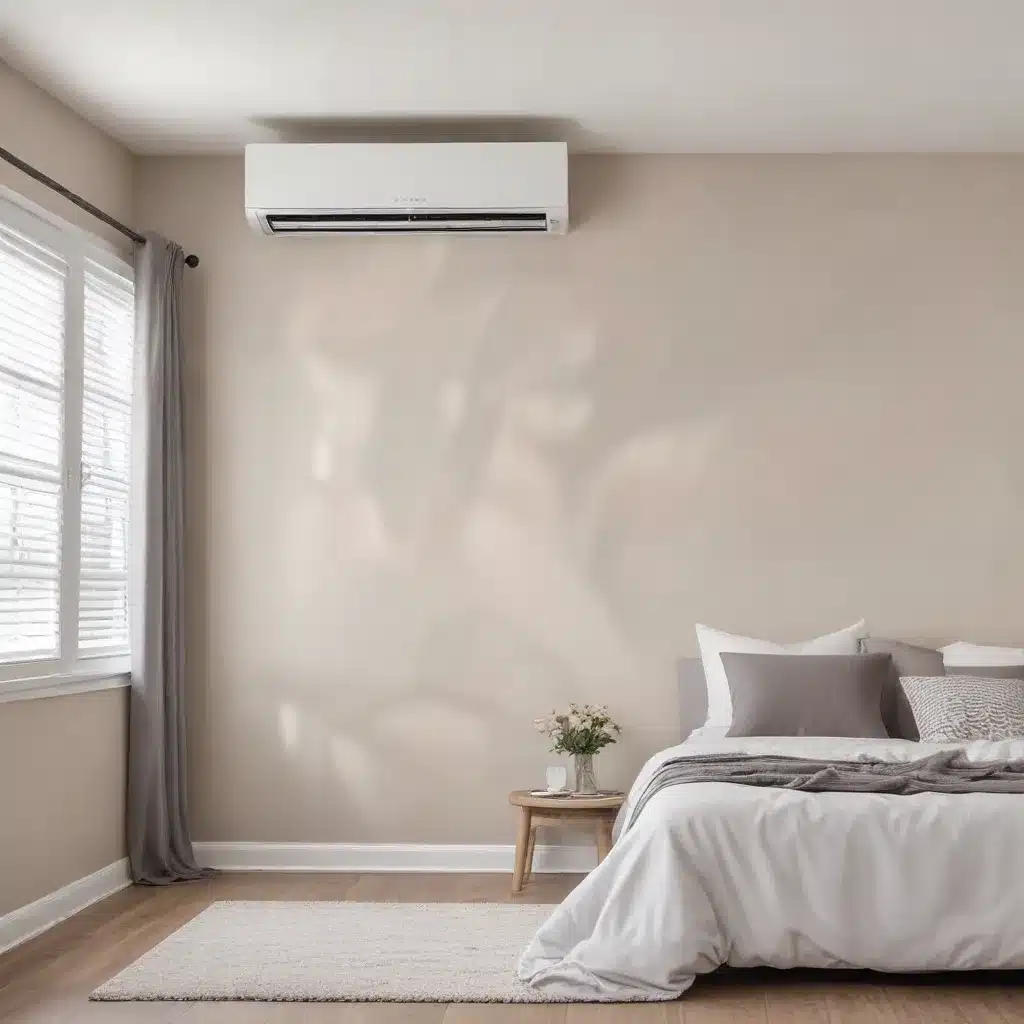
As an experienced air conditioning specialist, I’ve had the pleasure of working with a wide range of HVAC systems over the years. One technology that has truly impressed me is the ductless mini-split system. These innovative solutions offer a range of benefits that make them an increasingly popular choice for homeowners seeking efficient and flexible climate control.
The Rise of Ductless Mini-Splits
Ductless mini-split systems have been gaining traction in recent years, and for good reason. These systems consist of an outdoor compressor/condenser unit and one or more indoor air-handling units, connected by refrigerant lines. Unlike traditional centralized systems that rely on extensive ductwork, ductless mini-splits allow for targeted temperature control in individual rooms or zones.
One of the key advantages of ductless mini-splits is their energy efficiency. These systems are designed to operate on the inverse refrigeration cycle, which means they can transfer heat rather than generate it. This results in significant energy savings, with the U.S. Department of Energy reporting that ductless mini-splits can save homeowners up to 30% on their energy bills compared to traditional central air conditioning systems.
Zoning for Optimal Comfort
The zonal control offered by ductless mini-splits is a game-changer for homeowners. With the ability to cool or heat individual rooms or zones, you can tailor the climate to your specific needs and preferences. This is particularly useful in homes with varying usage patterns or uneven heating and cooling requirements.
For instance, if you have a seldom-used guest room, you can keep it at a different temperature than the rest of the house, reducing energy consumption and costs. Conversely, if you have a home office or a media room that requires more intensive cooling or heating, a ductless mini-split system can provide the precise climate control you need, without the inefficiency of cooling the entire home to that level.
Flexible and Discreet Installation
One of the most appealing aspects of ductless mini-splits is their installation flexibility. These systems are designed to be easy to install, with minimal disruption to your home’s existing structure. Unlike traditional central air conditioning systems that require extensive ductwork, ductless mini-splits only require a small hole in the wall to connect the indoor and outdoor units.
This makes them an excellent choice for homes without existing ductwork, or for additions and renovations where extending the ductwork would be impractical or costly. The indoor units can be mounted on the wall or ceiling, providing a discreet and unobtrusive appearance that seamlessly blends into your home’s decor.
Improved Indoor Air Quality
In addition to their energy efficiency and zonal control, ductless mini-split systems can also contribute to improved indoor air quality. These systems come equipped with advanced filtration systems that can remove airborne contaminants, such as dust, pollen, and even bacteria, providing a healthier living environment for you and your family.
Furthermore, ductless mini-splits eliminate the risk of air leaks and potential contamination that can occur with traditional ductwork systems. By delivering conditioned air directly to the indoor spaces, these systems help to maintain a consistent and clean indoor air quality, which is especially important for those with respiratory sensitivities or allergies.
Cost-Effective Heating and Cooling
While the initial cost of a ductless mini-split system may be higher than a traditional central air conditioning system, the long-term savings can be substantial. These systems are designed to be highly efficient, which means they can translate to lower monthly energy bills over time.
Additionally, the targeted climate control and zonal capabilities of ductless mini-splits can help you avoid the need to cool or heat areas of your home that are not in use, further reducing your energy consumption and costs. This makes them a particularly attractive option for homeowners looking to optimize their HVAC system’s performance and minimize their carbon footprint.
Embracing the Future of Home Climate Control
As we look to the future, it’s clear that ductless mini-split systems are poised to play an increasingly important role in the world of home climate control. These innovative solutions offer a range of benefits that cater to the evolving needs and preferences of modern homeowners.
Whether you’re building a new home, renovating an existing space, or simply looking to upgrade your HVAC system, I highly recommend exploring the benefits of ductless mini-splits. By investing in these efficient and flexible systems, you can enjoy a comfortable, energy-saving, and environmentally-friendly home climate for years to come.
Choosing the Right Ductless Mini-Split System
When it comes to selecting the right ductless mini-split system for your home, there are a few key factors to consider. The size and layout of your living space, the number of zones you require, and your energy efficiency goals will all play a role in determining the optimal system for your needs.
I’d recommend consulting with a reputable HVAC professional, such as those at Hamilton Air Conditioning, to help you navigate the selection process. They can assess your specific requirements, provide personalized recommendations, and ensure a seamless installation that maximizes the benefits of your ductless mini-split system.
As an experienced air conditioning specialist, I’ve seen firsthand the transformative impact that ductless mini-split systems can have on a home’s comfort and energy efficiency. If you’re ready to explore the future of climate control, I encourage you to take the next step and learn more about how these innovative solutions can enhance your living experience.